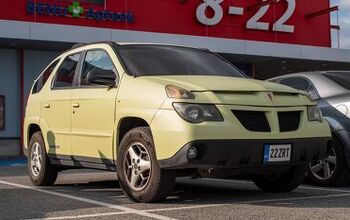California PHEV Owners Return to Gas Power
Electric vehicles are one way to carbon neutrality. Yet 20 percent of California PHEV owners have gone back to gas-powered vehicles.
Published in Nature Energy on April 26th by the Institute of Transportation Studies at the University of California, Davis, the study found that PHEV buyers in California were abandoning the technology at a rate of 20 percent, as were 18 percent of battery electric vehicle (BEV) owners.
According to the researchers, dissatisfaction with charging convenience, and not having level two, 240-volt charging at home, were the primary reasons.
The National Center for Sustainable Transportation (NCST) funded the analysis. The US Department of Transportation supported the University Transportation Centers program. The California Air Resources Board (CARB) paid for the questionnaire portion. They are one and the same agency that sniffs tailpipes for excess emissions.
Researchers Scott Hardman and Gil Tal had a premise: In order for EVs to be successful, it meant buyers needed to repurchase EVs. Abandoning the technology would prevent EVs from reaching 100 percent market share. They methodically surveyed California households who had purchased PEVs between 2012=2018. EVs’ success relied on adopters continuing to purchase EVs. 18 percent of EV owners and 20 percent of PHEVs were dissatisfied enough to return to gas-powered vehicles.
As noted by cnet.com, the problem centers around at-home charging. Level 2, 240-volt charging, or a lack thereof, is what led to discontent. Without the ability to recharge your EV at home, all the benefits of EV ownership go out the window. The lack of fast public chargers is a problem. Chargers that aren’t fast enough in comparison to refueling your car also diminished the EV experience.
Half the owners who bought another EV had Level 2 charging access, yet 30 percent who had access to Level 2 charging still decided against buying another EV. Their conclusion? It was pretty much even whether California PHEV owners decided to buy another EV or not. As the technology improves and charging installation is bundled with the purchase of an EV, it should help the green movement grow.
[Image: Mercedes-Benz]
With a father who owned a dealership, I literally grew up in the business. After college, I worked for GM, Nissan and Mazda, writing articles for automotive enthusiast magazines as a side gig. I discovered you could make a living selling ad space at Four Wheeler magazine, before I moved on to selling TV for the National Hot Rod Association. After that, I started Roadhouse, a marketing, advertising and PR firm dedicated to the automotive, outdoor/apparel, and entertainment industries. Through the years, I continued writing, shooting, and editing. It keep things interesting.
More by Jason R. Sakurai
Latest Car Reviews
Read moreLatest Product Reviews
Read moreRecent Comments
- Akear Does anyone care how the world's sixth largest carmaker conducts business. Just a quarter century ago GM was the world's top carmaker. [list=1][*]Toyota Group: Sold 10.8 million vehicles, with a growth rate of 4.6%.[/*][*]Volkswagen Group: Achieved 8.8 million sales, growing sharply in America (+16.6%) and Europe (+20.3%).[/*][*]Hyundai-Kia: Reported 7.1 million sales, with surges in America (+7.9%) and Asia (+6.3%).[/*][*]Renault Nissan Alliance: Accumulated 6.9 million sales, balancing struggles in Asia and Africa with growth in the Americas and Europe.[/*][*]Stellantis: Maintained the fifth position with 6.5 million sales, despite substantial losses in Asia.[/*][*]General Motors, Honda Motor, and Ford followed closely with 6.2 million, 4.1 million, and 3.9 million sales, respectively.[/*][/list=1]
- THX1136 A Mr. J. Sangburg, professional manicurist, rust repairer and 3 times survivor is hoping to get in on the bottom level of this magnificent property. He has designs to open a tea shop and used auto parts store in the facility as soon as there is affordable space available. He has stated, for the record, "You ain't seen anything yet and you probably won't." Always one for understatement, Mr. Sangburg hasn't been forthcoming with any more information at this time. You can follow the any further developments @GotItFiguredOut.net.
- TheEndlessEnigma And yet government continues to grow....
- TheEndlessEnigma Not only do I not care about the move, I do not care about GM....gm...or whatever it calls itself.
- Redapple2 As stated above, gm now is not the GM of old. They say it themselves without realizing it. New logo: GM > gm. As much as I dislike my benefactor (gm spent ~ $200,000 on my BS and MS) I try to be fair, a smart business makes timely decisions based on the reality of the current (and future estimates) situation. The move is a good one.


































Comments
Join the conversation
I bought one just to get on the carpool lane for free, and now that deal is over I am no longer going to buy an EV / plug in. If the price is right I might consider in the future but at the moment I like my gas car better.
I have a PHEV, and my next car is going to be a gasser, because I want to do some track driving. But, I'm certainly an edge case. I may keep the PHEV to use as an additional car, because it's been such a good car and I won't get that much money for it. If I didn't want to drive on the track, I'm not sure what I'd get. EVing around town is so much nicer than driving a gasoline powered car, it would be hard to give that up, but I don't see an EV that I'd really like. Since what I have has been so reliable and cheap to run, I'd probably just keep it for a few years and see if something else I really liked came along.